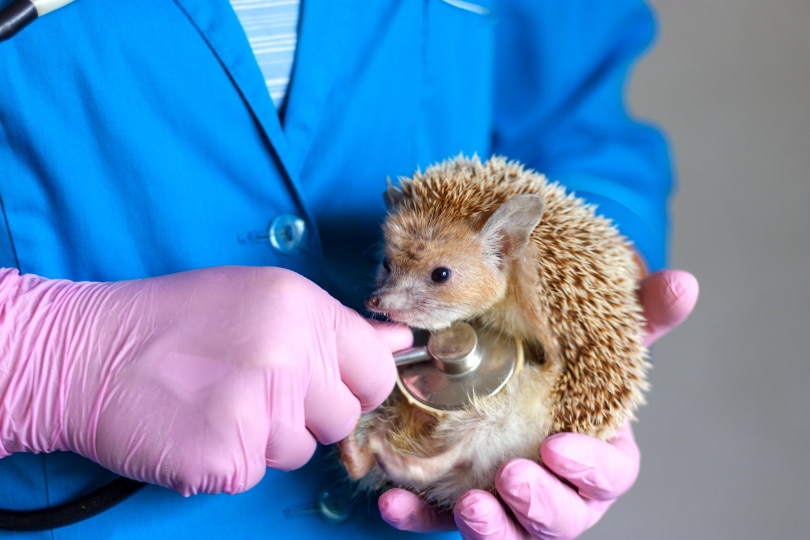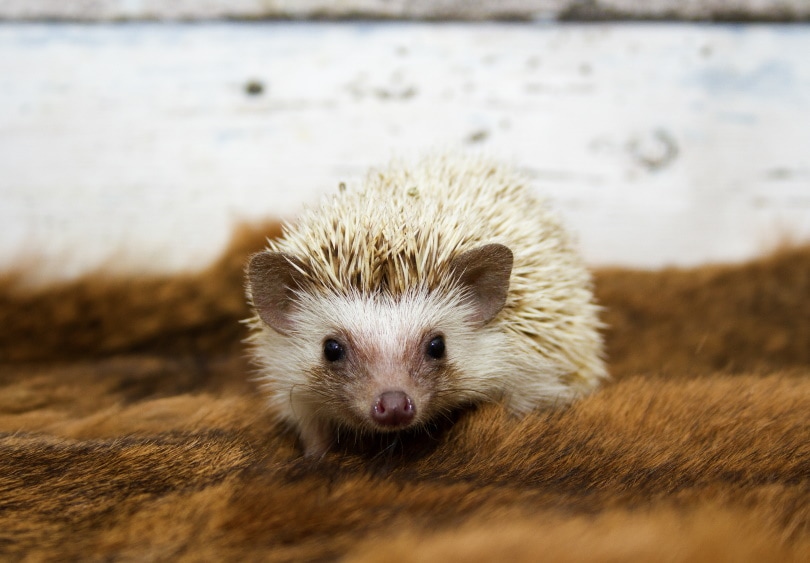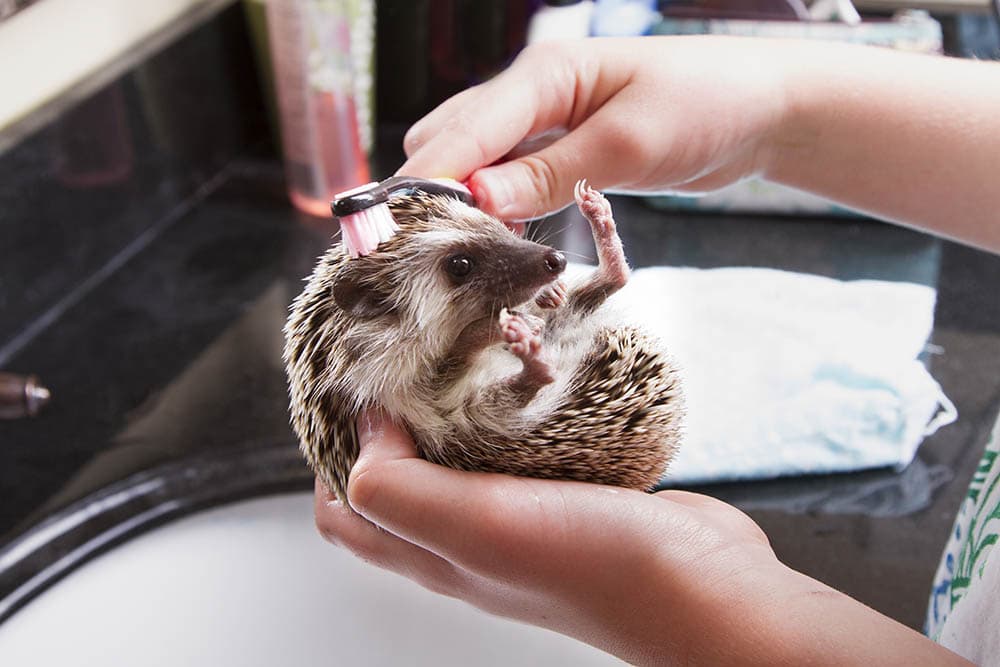
As pet owners, the last thing we want to see is our beloved animals in pain or discomfort. Unfortunately, however, it happens from time to time. For hedgehogs, mites are often one of the main sources of painful discomfort.
Hedgehog mites are quite common. While not every hedgehog will experience them, chances are high that they will. Many owners don’t realize just how easy it is for hedgehogs to contract mites, which leaves them unprepared when an infestation occurs. Due to this, many hedgehogs suffer longer than they should.
To help hedgehogs around the world avoid unnecessary suffering at the hands of mites, we’re going to take a look at the symptoms and treatments for these pests. By having this information at the ready, you will be better prepared as a hedgehog parent to jump into action and eradicate the issue.
What Are Hedgehog Mites?
The first step in fighting hedgehog mites is to understand what they are. Mites are arachnids. These small pests are red or black and enjoy biting animals. While you may not see the mites on your hedgehog due to their knack for hiding in your pet’s quills and fur, you’ll see the damage they cause. These annoying pests love to bite the skin and cause irritation.

How Did My Hedgehog Get Mites?
This is a question all hedgehog owners ask themselves when they discover their babies have mites. Just because your hedgehog has mites, doesn’t mean you’ve done something wrong. It is extremely easy to contract these pests, which is why owners should always be on the lookout.
If you purchased your hedgehog from a pet store, that may be where the mites came from. Pet stores have other animals mites are known to be attracted to. Considering mites crawl from host to host, being near other animals can be a problem.
Handling other hedgehogs or animals, substrate, bedding, or food, then touching your pet can also pass mites. It is common for mites to find their way into the items we use for our pets daily. This is why knowing what signs to look for is so important.

The 3 Signs of Hedgehog Mites
Symptoms of mites don’t appear on a set time frame. While some hedgehogs may be more sensitive to mites than others, all will eventually show a few symptoms. Here’s what you should keep your eyes open for.
1. Dry Skin and Itchiness
Hedgehogs may occasionally scratch, but it isn’t something you’ll see them constantly doing. This changes when mites enter the picture. Mites burrow into quills and fur to bite and irritate the skin. Your hedgehog’s natural reaction is going to be scratching at this new nuisance. If you notice this abundant scratching, take a look at your hedgehog’s skin. Most likely, you’ll notice flakes and redness. This is from the biting, scratching, and dryness mites are causing.
2. A Cranky Hedgehog
One of the most important parts of owning any pet is learning their moods. This helps you notice when something is off and help your pet get through their issues. Your hedgehog may be a naturally cranky pal. Then again, it could be one of the most active, loveable critters around. When you notice a change in their demeanor, you should pay attention.

A hedgehog that is suffering at the hands, or teeth, of mites, may not act like itself. You may notice a lack of energy, loss of appetite, or increased moodiness. Your once playful pal may be prone to biting if you touch sore spots. Always take note of odd behaviors in your hedgehog so you can make things better for them.
3. Losing Quills
All hedgehogs go through a process called quilling a few times throughout their lives. This is where they lose old quills or spines, and new ones come in. If your hedgehog loses quills in patches and you aren’t noticing the signs of quilling, then mites are the likely culprit.
When hedgehogs lose their quills due to mites, it normally happens in patches along their back. While losing quills can present in several different ways, it is something that should never be ignored. If you see this and notice your pet is having other symptoms of mites, it is time to take action.
Mite Treatments for Hedgehogs
Once you notice your hedgehog suffering from symptoms of mites, a trip to the vet is in order. They will do a routine skin scrape to test for the mites and ensure there isn’t an underlying issue. When the pesky mites have been discovered, treatment can begin. Unfortunately, there aren’t any mite treatments specifically formulated for hedgehogs but treatments for cats have been proven to work.
After the vet has prescribed medicine for your hedgehog, it’s time for you to do your part. Your pal must be kept away from other animals for at least a week, while treatment is underway. This will ensure no other animals in the household fall victim to the mites. It is also important to quickly treat your hedgehog’s habitat to avoid a reinfestation after treatment.
Tossing out used bedding and kibble inside the habitat is a must. Once that is out of the way, everything inside the enclosure, toys included, must be thoroughly washed along with the enclosure itself. Any kibble or bedding that hasn’t been used inside the enclosure can be frozen for 24 hours. This will ensure no mites were brought into the home on these products and that they are safe to use with your treated hedgehog.

Keeping Mites at Bay
After seeing your hedgehog battle with mites, you’ll be on a mission to keep them at bay. One of the easiest ways to avoid mites is for you, the owner, to wash your hands. If you touch other animals, especially hedgehogs, don’t touch your pet without a thorough scrubbing. You may not see mites on your hands, but they may be there.
If you bring another hedgehog home to be part of the family, enact a quarantine period. By keeping the newest family member separated, you can watch for signs of mites or other illnesses. This is safer for both hedgehogs.
Considering food and bedding are often the cause of mite infestations, remember to always freeze new items before introducing them to your hedgehog’s enclosure. All food can be frozen without issues except for crickets and mealworms. Keep this in mind if you truly want to help your hedgehog avoid the pain and discomfort of mites.

In Conclusion
As you can see, mites can be hard on any animal, but especially one as small as hedgehogs. Knowing your pet and understanding the signs to watch for will help you keep your hedgehog happier and healthier. By being an attentive owner, you can easily help your pet avoid the pain and irritation associated with these pests.
Featured Image Credit: Jussi Suvela, Shutterstock









